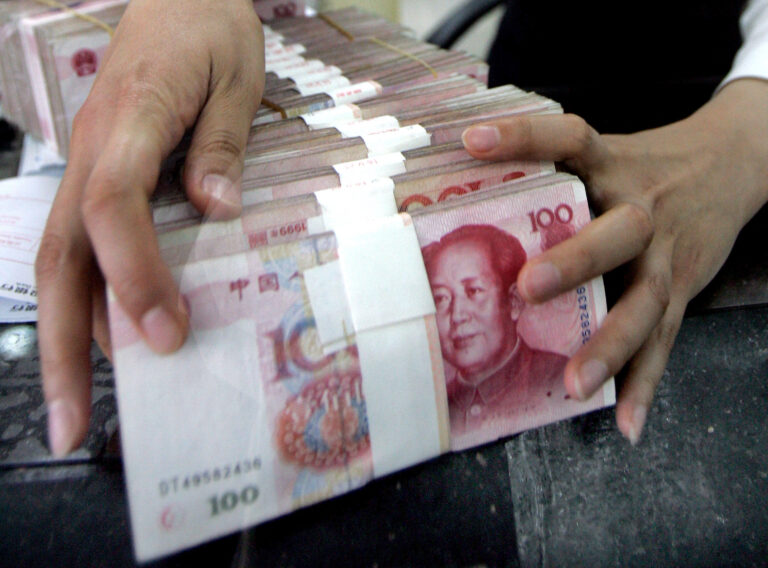According to reports, domestic financial institutions have fallen into debt, with at least 40 high-risk Chinese banks disappearing through mergers in the first half of this year alone.
The number of small and medium-sized banks, long vital to poor towns and villages, reached 1,636 at the end of last year, accounting for about 40 percent of China’s total banking institutions, according to government statistics.
Many of these local financial institutions have been hit hard by China’s economic slowdown and particularly the debt crisis that has rocked the country’s property market, with a Hong Kong court ordering the liquidation of property developer Evergrande earlier this year.
The number of small and medium-sized banks that had collapsed as of June 24 was four times the number that closed in all of 2023. The trend is only set to accelerate as restructuring gathers pace, according to financial news firm Yicai Global, citing industry insiders.

Goh Chai Hin/AFP via Getty Images
Challenges facing companies in troubled sectors and other market actors are weighing on the asset quality of these lenders, making it less likely that loans will be repaid, the people said.
Bankers in eastern China told the media that local banks typically have less start-up capital and fewer major shareholders than regulatory requirements, making it harder to manage risks and costs.
Adding to the banks’ woes are poor management practices, including low barriers to hiring directors and executives, which increase the risk of fraud, the people said.
Absorption by urban and rural commercial banks and joint stock financial institutions is expected to further mitigate risks. Moreover, repurposing these banks as local branches could help larger financial institutions expand their business reach, financial analyst Zhou Yiqin told the media.
Of the 40 failed micro-lenders, 36 are in Liaoning Province. The Liaoning Rural Commercial Bank was set up in September to take over the province’s failed banks.
China’s financial regulator, the Liaoning Provincial Regulatory Administration, said in a press release on June 19 that these more than 30 financial institutions must “complete their legal entity dissolution” by December.
China’s Foreign Ministry did not immediately respond to a written request for comment.
The main driver behind the reliance on integration is the lack of other options.
Unlike the Financial Institutions Reform, Recovery and Enforcement Act passed in the United States after the savings and loan crisis of the late 1980s and early 1990s, China currently has no framework to solve this problem by liquidating the assets of local banks.
Bank mismanagement has been a source of worry in China in recent years. In 2022, fraud, risky investments and misappropriation of deposits by several local banks in Henan province caused the banks to run dry.
Banks stopped customers from withdrawing their deposits, citing system upgrades, sparking bank runs and protests.
Rare knowledge
Newsweek is committed to challenging conventional wisdom, seeking common ground and finding connections.
Newsweek is committed to challenging conventional wisdom, seeking common ground and finding connections.

